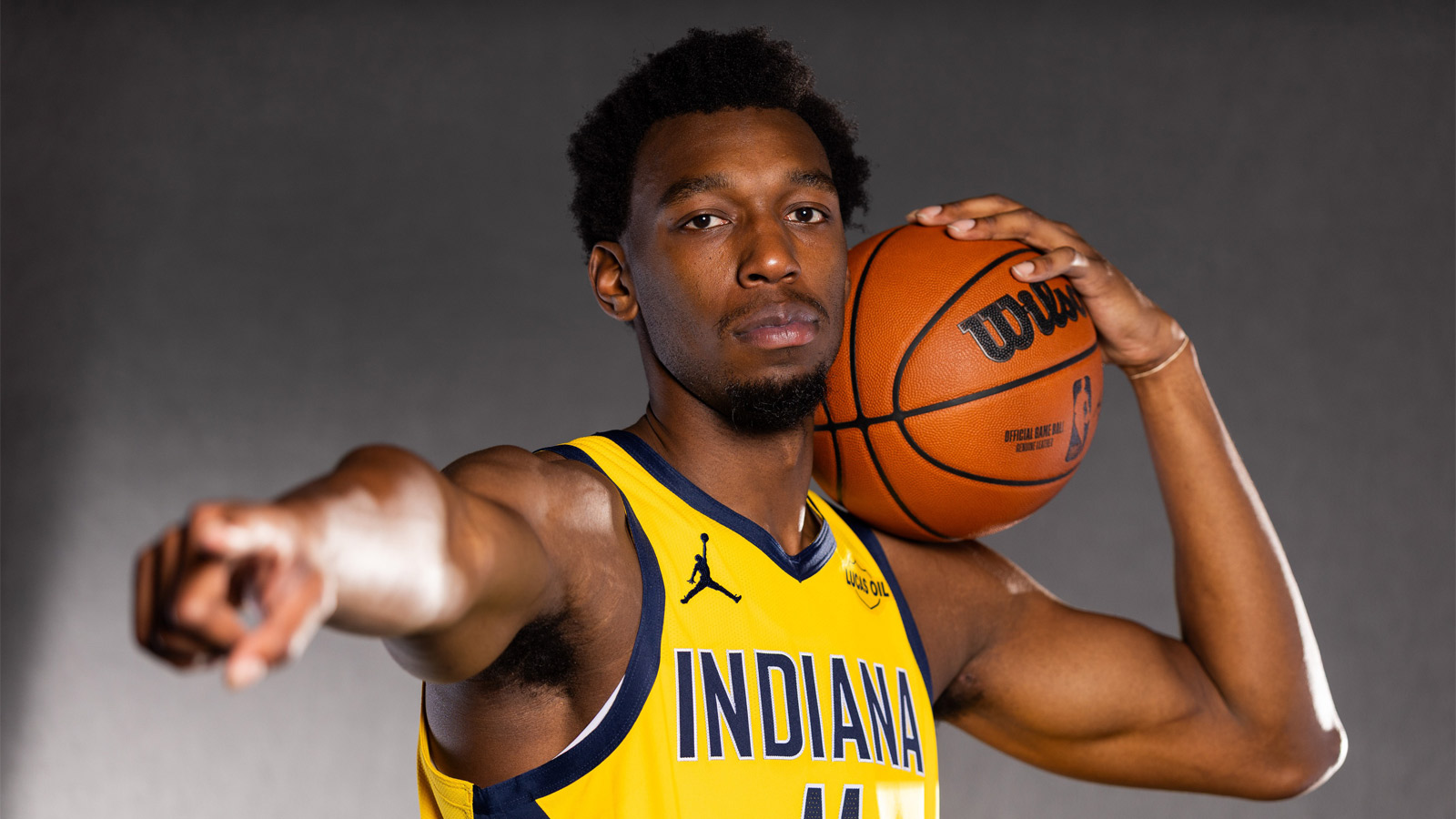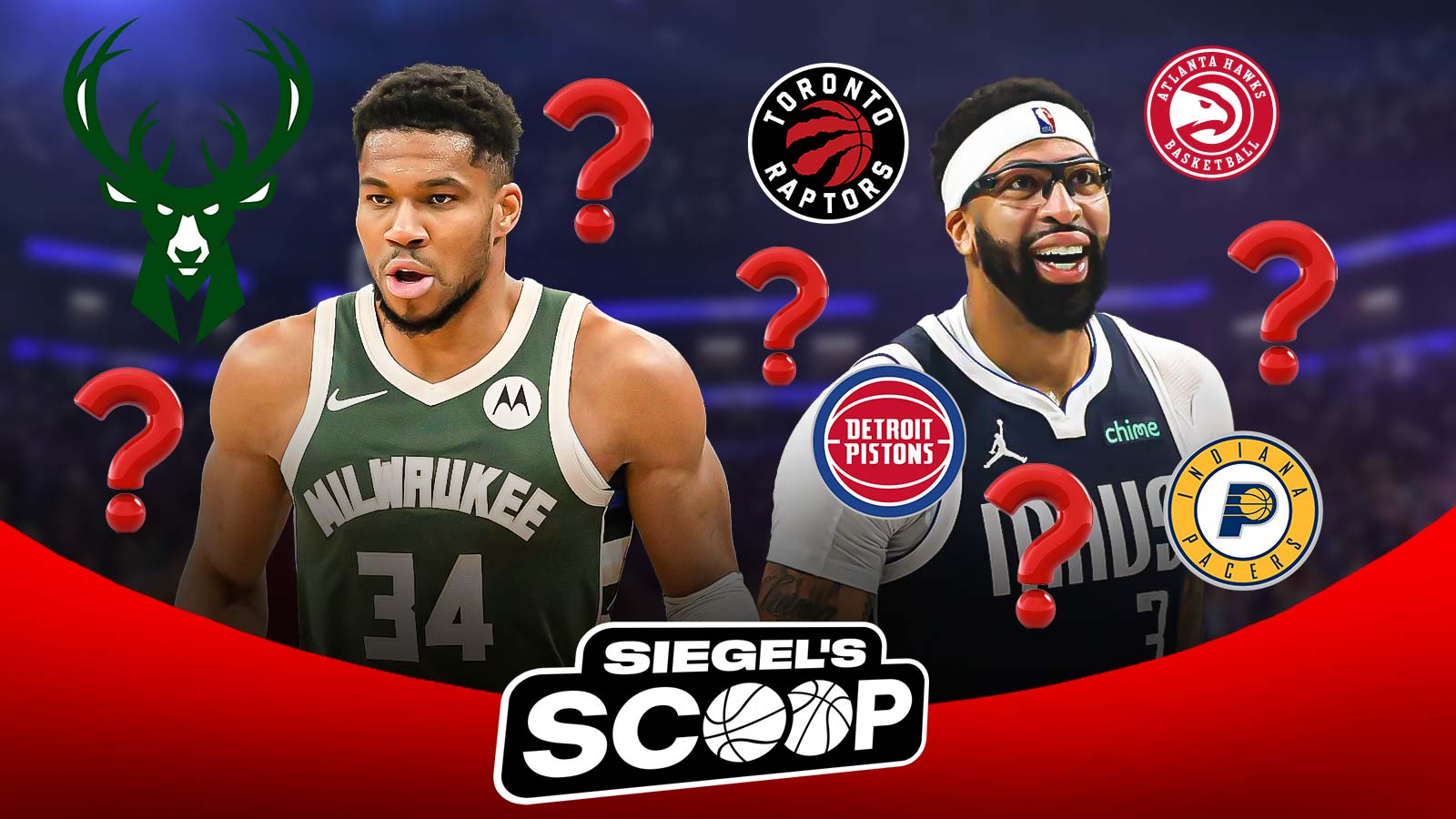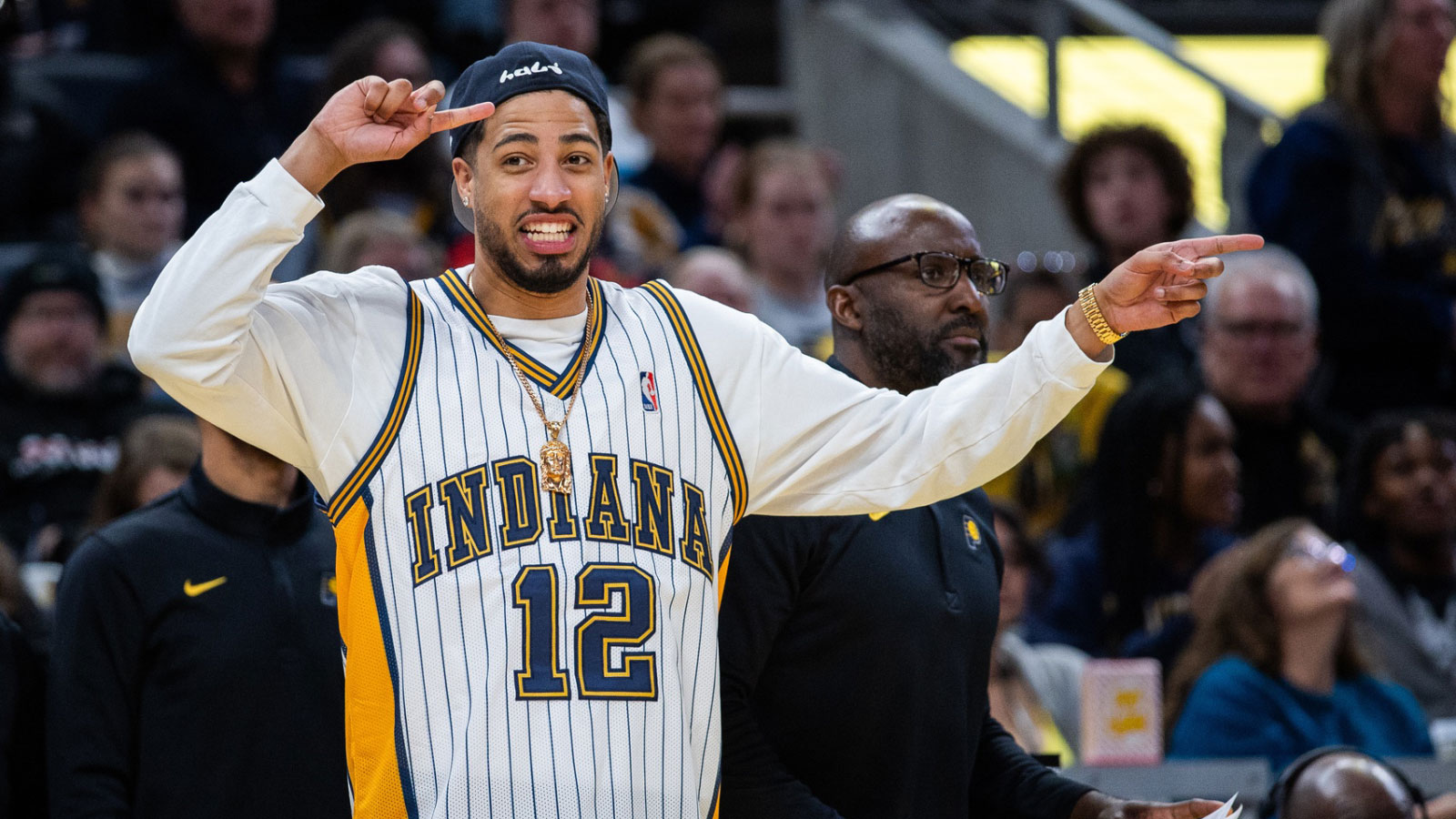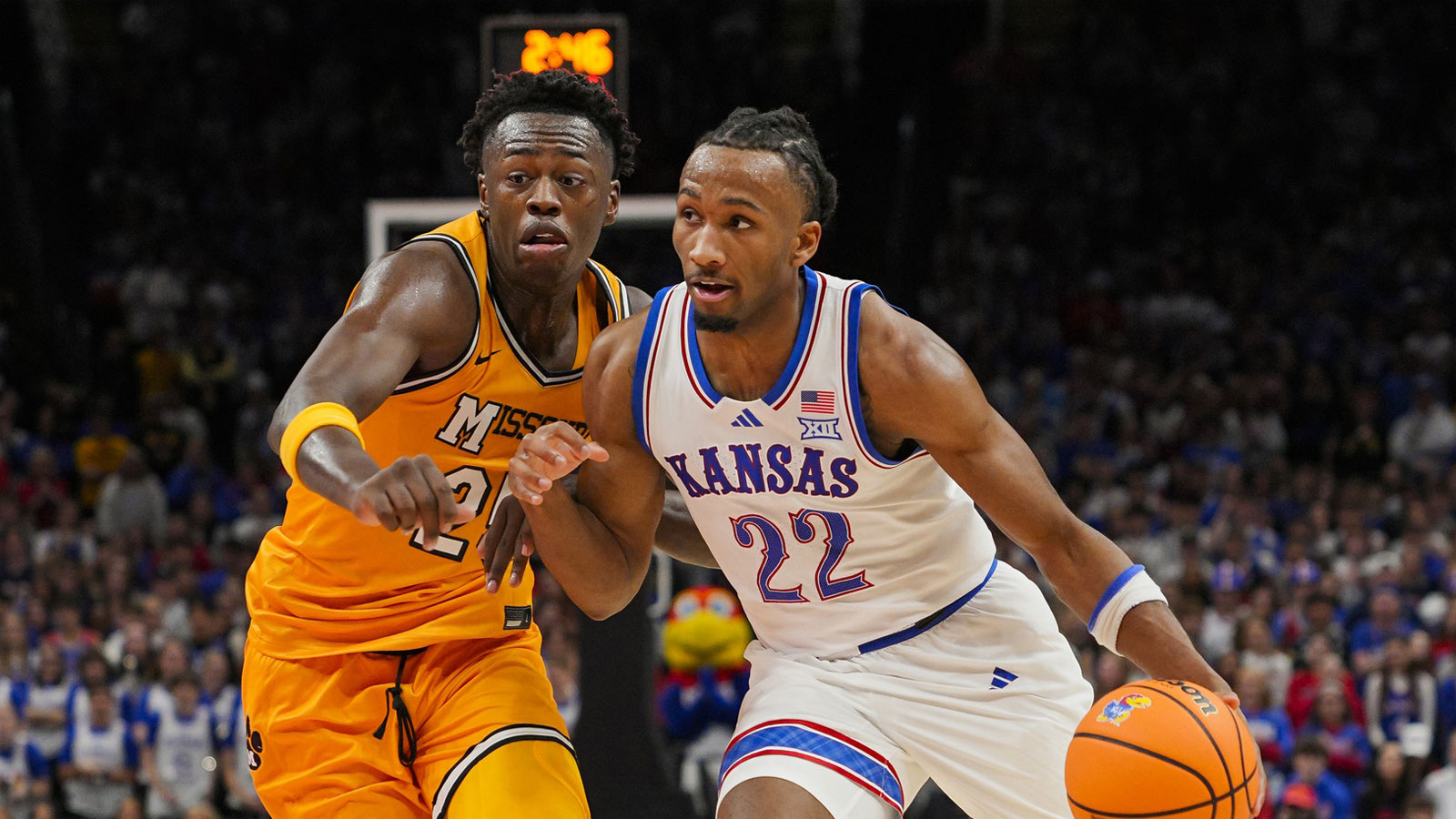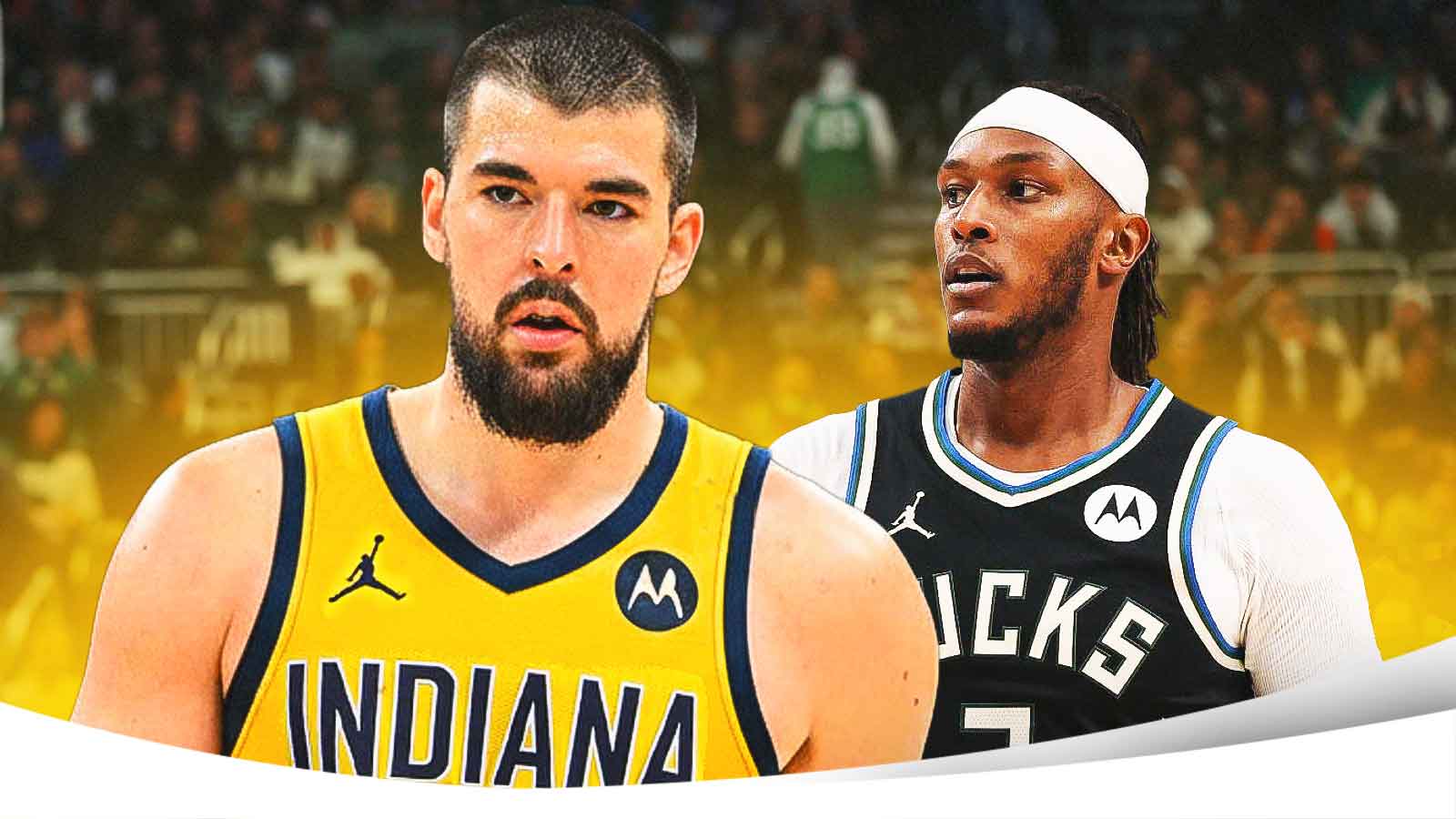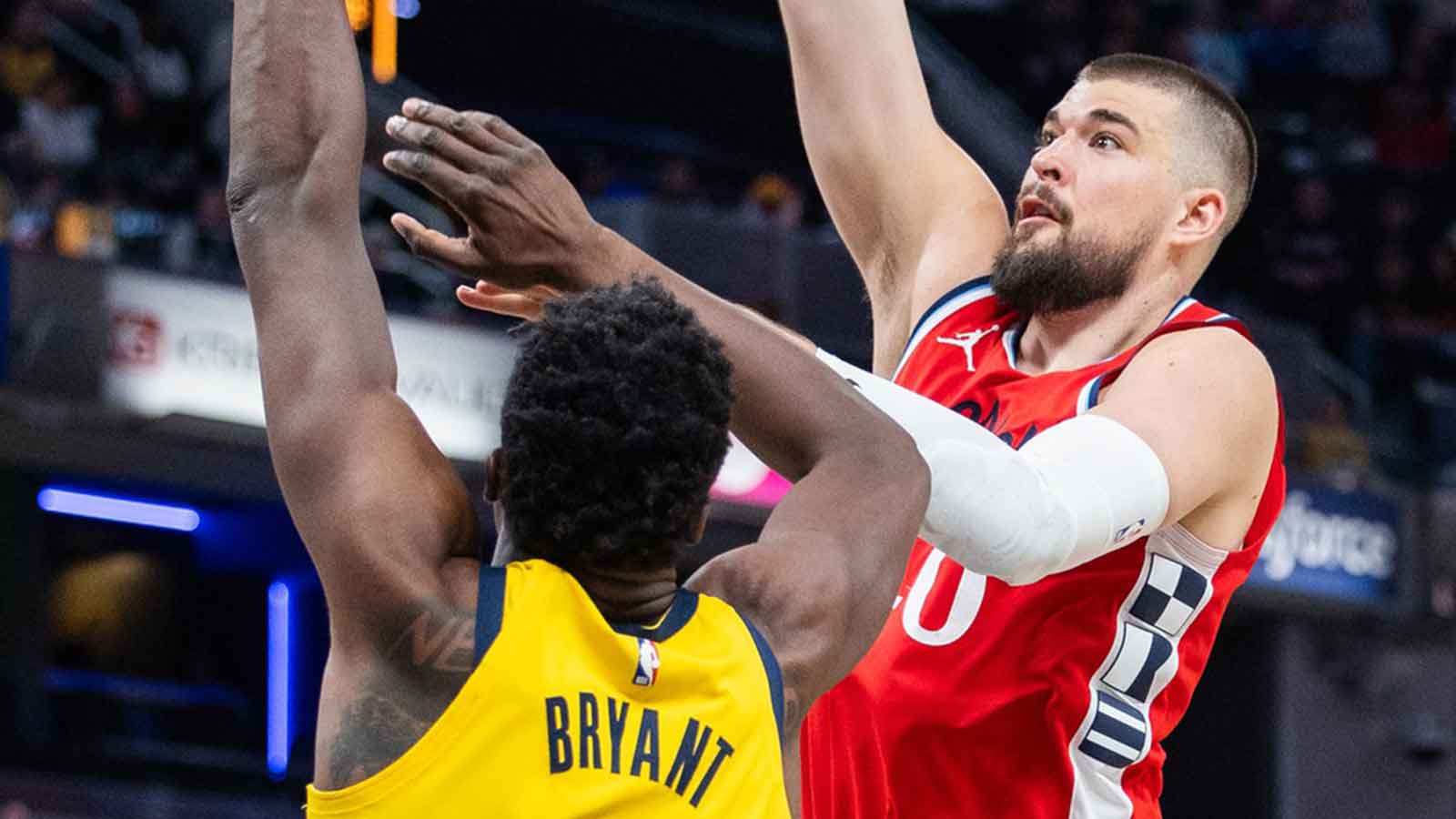In the Indiana Pacers' 56 years of history thus far, there are bound to be hits and misses on the trade front. There have been plenty of misses, with their trade sending Alex English to the Denver Nuggets in 1980 and their draft-night trade sending Kawhi Leonard away to the San Antonio Spurs for George Hill coming to mind immediately.
But the purpose of this exercise is to look at some of the best trades in franchise history, and there certainly have been plenty across the franchise's extensive lore.
10. Additional wing firepower (2004)
Pacers receive Stephen Jackson from the Atlanta Hawks for Al Harrington
The addition of Stephen Jackson appeared to be the final touch the Pacers need in building their championship team. But as would be discussed more extensively in a later entry, the 2004-05 season ended up being a disaster for Indiana after one fateful night against the Detroit Pistons.
Nevertheless, Jackson would be a huge part of the team for two years, helping them remain afloat, at least on the court, in the aftermath of Malice at the Palace.
9. Thank you, Phoenix (2019)
Pacers acquire TJ Warren (and 32nd pick) from the Phoenix Suns for cash considerations
In 2019, the Suns weren't yet the powerhouse team we know them as today. Back then, they were in rebuild mode; thus, it was confusing when they traded TJ Warren away to the Pacers… for nothing else but cash considerations and cap space.
Surely the Suns could have gotten more for Warren, especially when he was coming off a season in which he averaged 18 points per game. Yes, he was injury prone. But for a rebuilding team to lose him for nothing? Nevertheless, the Pacers won't be complaining.
TJ Warren was huge for the Pacers during the 2019-20 season, and he appeared to be ascending to another level after his outbursts in the NBA bubble. However, little did everyone know that Warren had peaked by then, as his career would never be the same after experiencing a plethora of injuries. But for the cheap price the Pacers paid, Warren was well worth it, even if he didn't help the franchise for more than one season.
8. Cashing in on aging star, Part I (1989)
Pacers acquire Detlef Schrempf and Antonio Davis for Herb Williams
It's important to credit the Pacers for knowing when to trade away established veterans of the team. One such instance came in 1989, when they traded away Herb Williams, a veteran of the team for eight seasons, to the Dallas Mavericks for Detlef Schrempf and a pick that ended up being Antonio Davis.
The only factor that puts a damper on this trade is that the Pacers gave up way too early on Schrempf, trading him away to the Seattle Supersonics for an uninspiring package headlined by Derrick McKey. The saving graces of this deal are that McKey ended up being a solid starter for them for a few years, and that Davis became a huge piece for the Pacers during their contending years in the mid-1990s.
7. Cashing in on aging star, Part II (2008)
Pacers trade away Jermaine O'Neal for package headlined by Roy Hibbert
It's incredible that, in one trade, the Pacers were able to transition from one era of frontcourt reassurance to another. In 2008, with the Pacers going nowhere fast, the team traded O'Neal to the Toronto Raptors for a package including Roy Hibbert, the 17th pick of the recent NBA Draft.
Hibbert became the Pacers' starting center in the middle of his rookie year, and he then emerged into one of the most intimidating rim protectors in the league. He was crucial as a core piece of the Pacers teams in the early 2010s that gave the LeBron James-led Miami Heat a bit of a scare, as his impeccable ability to remain vertical when challenging would-be scorers at the rim made him one of the most effective defenders in the NBA.
Alas, the three-point revolution pushed Roy Hibbert out of the league, rendering his paint-bound defense more suited to just a few matchups. But don't let that put too much of a damper on Hibbert's mostly fruitful career for the Pacers.
6. Championship in an alternate universe (2002)
Pacers trade for Ron Artest and Brad Miller from the Chicago Bulls for Jalen Rose and Travis Best
It's worth mentioning that Jalen Rose continued to play at a high level for the Bulls, averaging 21.4 points in his shorter-than-expected stint in the Windy City. However, it's the Pacers that benefitted more from this swap, as Ron Artest gave the Pacers the rugged, two-way wing presence the team sorely needed around Reggie Miller, who was in the last legs of his career, and burgeoning star Jermaine O'Neal.
In 2004, the Pacers won 61 games, falling just short against eventual champion Pistons in the Eastern Conference Finals. But the following year appeared to be the Pacers' year. They started off the season on the right foot, winning six of their first eight games. Artest was a beast during that time, averaging 24.6 points while the Pacers stood out as one of the league's title favorites.
Alas, Game 9 against the Pistons brought the Pacers franchise much grief — not just for the rest of the 2004-05 season, but for years to come. Artest's season-long suspension as a result of Malice at the Palace derailed the Pacers franchise, and it eventually resulted in his departure for the Kings in early 2006.
Nevertheless, for a few years, the Pacers appeared ready to overcome the championship hump that was in front of them, thanks in large part to Ron Artest. The Malice at the Palace, as unfortunate as that incident may be, shouldn't detract from how big of a win this trade was for the Pacers, even for just a few seasons.
5. Recycling Mark Jackson (94, 96, 97)
1994: Pacers acquire Mark Jackson from the Los Angeles Clippers for Malik Sealy, Pooh Richardson, and Eric Piatkowski
1996: Pacers trade Mark Jackson plus others to the Denver Nuggets for Jalen Rose, Reggie Williams, and pick that would become Erick Dampier
1997: Pacers re-acquire Mark Jackson from the Nuggets for Vincent Askew, Eddie Johnson, and two second-round picks
It may be cheating to include three trades in one entry, but the Pacers could teach a masterclass in asset maximization with the trades mentioned above. The Pacers' initial trade with the Clippers for Jackson could be seen as a bit of a wash, as the three players they sent ended up playing huge roles for the Clippers. Even then, the Clippers remained bad during that time, while the Pacers acquired a point guard who helped set the table for Reggie Miller and company.
In 1996, however, the Pacers wanted to go younger, dealing away Jackson for Jalen Rose and a few other assets — perfect timing, especially with the team in a bit of a downturn. Dampier would help net the Pacers Chris Mullin, while Rose would blossom into a 20+ points per game scorer for the late 1990s and early 2000s iterations of the team.
However, with the CBA being more lax when it comes to re-acquiring players teams just traded away, the Pacers re-traded for Mark Jackson less than a year after trading him, paying a pittance to the Nuggets compared to what Denver dealt away for him. Jackson would then play three more fruitful years for the Pacers, even helping them come to within two wins away from winning a title in 2000.
4. Best win-win in recent memory? (2022)
Pacers swap Domantas Sabonis for Tyrese Haliburton
For years, Domantas Sabonis joined John Collins in the inaugural Myles Turner trade block candidates. The Sabonis and Turner partnership remained suboptimal, particularly on defense, as it forced one of the two centers to guard the perimeter for extended stretches. In 2022, with the Pacers in the middle of a terrible season, they finally pulled the trigger, dealing away the do-it-all Lithuanian to the Kings for a package led by Tyrese Haliburton.
The Kings had a fit issue themselves, with Haliburton not exactly being the backcourt partner De'Aaron Fox needed. So it was a match made in heaven, with the Pacers and Kings getting exactly what they wanted out of this fateful swap.
Sacramento ended up breaking their postseason drought with Domantas Sabonis at the heart of their incredible, dribble handoff-centric offense, while Indiana now has its long-term building block in Tyrese Haliburton, a nightly 20-10 threat who's the clear heir apparent to Chris Paul's title as the Point God. With Haliburton's incredible play spearheading the Pacers' efforts, it's not too difficult to envision a prosperous future in their docket.
3. Don't judge a book by its cover (2017)
Pacers trade Paul George to the Oklahoma City Thunder for Domantas Sabonis and Victor Oladipo
By the end of the 2017 season, it wasn't clear how the Pacers could build a contending team around Paul George. The additions of Jeff Teague and Thaddeus Young the previous offseason weren't enough, as the 2017 Pacers scuffled to a seventh-seed finish and another defeat at the hands of LeBron James. So it was only a matter of time for George and the Pacers to part ways, which they did in June 2017.
Fans, however, seemed to think that the Pacers got a suboptimal return for PG13. Victor Oladipo and Domantas Sabonis were coming off uninspiring seasons for the Thunder, so to see them be the centerpieces of a trade for a multiple-time All-Star confounded some. But with newfound offensive freedom and a higher place in the pecking order, Oladipo and Sabonis flourished, with both of them emerging as All-Star talents. That's not too shabby of a return for a player who had already wanted out.
2. Arrival of ABA Legend (1968)
Pacers receive Mel Daniels from the Minnesota Muskies for Jimmy Dawson, Ronald Kozlicki, first-round pick, and cash
It's difficult to write about trades that happened from before my parents were born, but alas, here it goes. The Pacers, back when they were still in the ABA, made one of the best trades in franchise history when they dealt away two forgettable players in exchange for a Naismith Memorial Basketball Hall of Famer.
Alas, the financial realities of professional basketball back then forced the Muskies' hands as the Pacers alleviated their burden by taking on Mel Daniels' contract. Even with that knowledge, that trade still remains one of the most lopsided in franchise history, as Daniels averaged 19.4 points and 16 rebounds in six seasons with the team, earning him a jersey retirement from the Pacers in 1985.
1. Plucking a future star from the Blazers bench (2000)
Pacers acquire Jermaine O'Neal from the Portland Trail Blazers for Dale Davis
Once upon a time, the Blazers had this young, raw big man on their bench in Jermaine O'Neal. O'Neal showed flashes of being an impact player for the Blazers, particularly on defense, but the team, in its win-now state in the late 1990s, simply had no choice but to rely heavily on veterans such as Arvydas Sabonis and Brian Grant to anchor the frontcourt. Thus, for the first four years of O'Neal's career, he languished on the Blazers bench.
But the Pacers front office saw O'Neal's potential, dealing away longtime frontcourt anchor Dale Davis for his services. Almost immediately, O'Neal blossomed, extending the Pacers' run of dominance in the East in the early-2000s. In just his second season in Indianapolis, O'Neal became an All-Star talent, making the team for six straight years from 2002 to 2007.
As mentioned in the Ron Artest entry, if only the Pacers didn't end up engaging in what turned out to be the biggest melee in NBA history, perhaps the addition of Jermaine O'Neal could have brought the team its first-ever title.








